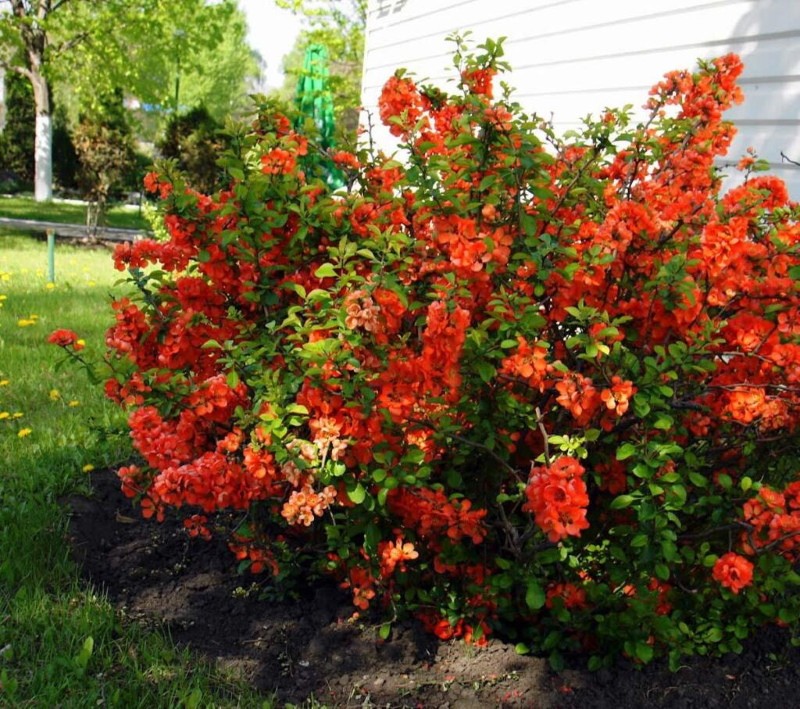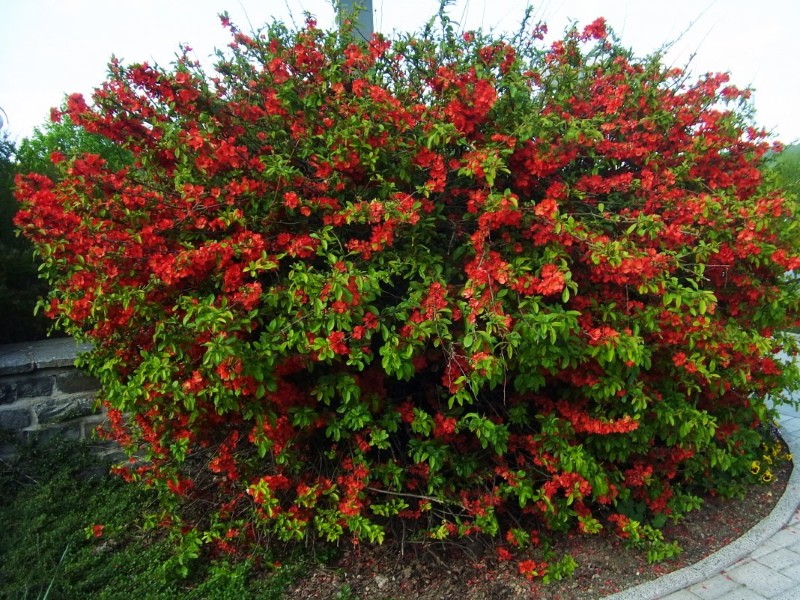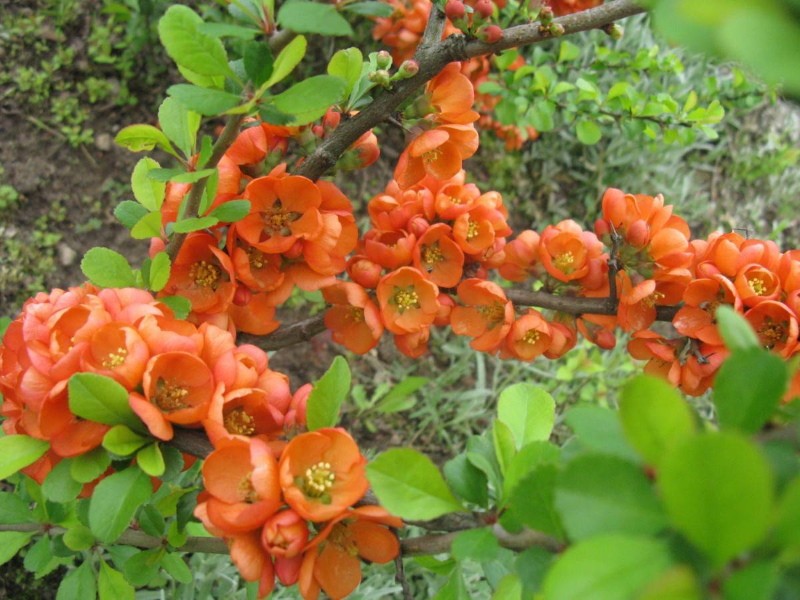Beautiful chaenomeles - Japanese quince, planting and caring for ornamental edible shrubs
 A gorgeous bush with blazing red or romantic pink flowers, densely stuck to branches, is hard to miss. This is a close relative of the common quince known to us - henomeles, Japanese quince, planting and caring for which in general are not much different. But if we plant ordinary quince for the sake of fragrant sweet and sour fruits, then with chaenomeles they mainly prefer to decorate the plots. And it's not that its fruits are inedible. And it is quite possible to eat if you prefer sour fruits. The reason is different: chaenomeles simply blooms incredibly beautifully. Perhaps no other fruit plant has such large and bright buds. Combined with its unpretentious nature, this makes the Japanese quince a welcome guest in every garden.
A gorgeous bush with blazing red or romantic pink flowers, densely stuck to branches, is hard to miss. This is a close relative of the common quince known to us - henomeles, Japanese quince, planting and caring for which in general are not much different. But if we plant ordinary quince for the sake of fragrant sweet and sour fruits, then with chaenomeles they mainly prefer to decorate the plots. And it's not that its fruits are inedible. And it is quite possible to eat if you prefer sour fruits. The reason is different: chaenomeles simply blooms incredibly beautifully. Perhaps no other fruit plant has such large and bright buds. Combined with its unpretentious nature, this makes the Japanese quince a welcome guest in every garden.
Chaenomeles characteristic

Originally from Japan, chaenomeles has successfully taken root in our latitudes. It feels best in the southern regions, where it blooms more abundantly. But the ability to withstand frosts down to minus 30 ° C makes it possible to grow chaenomeles in the Siberian expanses.
The main decoration of the Japanese quince is, of course, its flowering. At the end of May, its branches are covered with many large flowers up to 5 cm in diameter. Most often they have different shades of red, but there are also species with pink or orange buds. Flowering lasts more than 20 days, and the fruits ripen by mid-autumn. They differ from ordinary quince in small size and very sour pulp. Fresh, rarely anyone likes such a fruit, but for making compotes and jam it will do just fine.
Henomeles - Japanese quince, planting and care
 Given that the native climate of this quince is warm, it is advisable to plant it in spring. Frosts are not so terrible for adult bushes, and during autumn planting, a thermophilic seedling may not have time to take root.
Given that the native climate of this quince is warm, it is advisable to plant it in spring. Frosts are not so terrible for adult bushes, and during autumn planting, a thermophilic seedling may not have time to take root.
A characteristic feature of the plant is very slow growth and photophilousness. It should be planted in a well-lit area, where there are no drafts. In the shade, quince hardly grows, and blooms worse. Chaenomeles has no special requirements for soil. Fertile, loose and slightly acidic soil is quite suitable for him.
Chaenomeles tolerates a transplant very painfully, so a permanent place should be chosen immediately. If the quince likes everything, then it will grow there up to 60 years.
How to care for Japanese quince in the garden
 You can often meet chaenomeles in the wild, where it grows on its own without any care. It is not surprising that cultivated quince is also unpretentious.
You can often meet chaenomeles in the wild, where it grows on its own without any care. It is not surprising that cultivated quince is also unpretentious.
Young bushes deserve a little more attention, but for adults, the care will be minimal:
- moderate watering once a month if there is little rainfall;
- only three dressings per season: in spring - with nitrogen fertilizers, after flowering and after harvesting - with potassium-phosphorus fertilizers;
- starting from the age of 4, in the spring, you can do formative pruning, which the bush tolerates well;
- plants over 10 years old need anti-aging pruning (the gradual removal of old shoots).
Chaenomeles, growing in warm climates, does not need shelter. In the central strip and to the north, it is recommended to spud the bushes. In the Urals and Siberia, they are wrapped in sackcloth or pulled over a set frame.